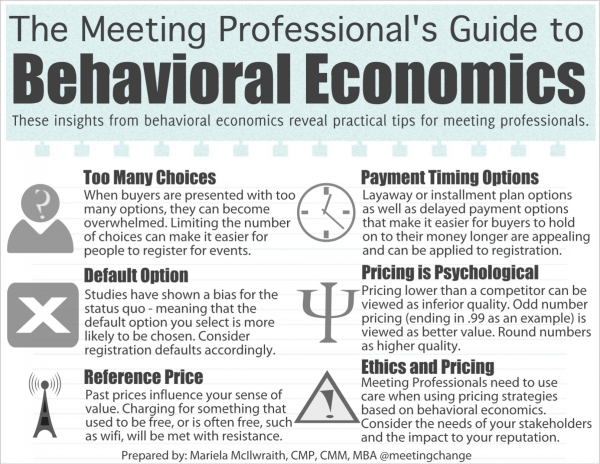#Eventprofs: Please fill out the GMIC @greenmeetings sustainability survey. We need the data!
 Last week, the Green Meeting Industry Council (GMIC) sent out a survey on sustainability practices. Full disclosure – I work for them as Director, Sustainability.
Last week, the Green Meeting Industry Council (GMIC) sent out a survey on sustainability practices. Full disclosure – I work for them as Director, Sustainability.
The survey is part of a multi-phase study commissioned by GMIC that is being conducted by the University of Nevada, Las Vegas (UNLV) titled An Analysis of Corporate Brands: How Corporate Brands Use Live Events to Underscore Sustainability Practices. Study results will be available in September 2016.
If you’re an event professional (planner, supplier, third-party planner), please take a few minutes (12-15 or so) to fill out the survey.
The purpose of this study is to gain a clear vision of the current sustainable/green practices in the meetings and events industry, and understand which sustainable practices are regularly implemented. The results aim to provide a sustainable events planning benchmark against which firms can compare their own planning, and provide guidance for planners and suppliers for new opportunities in sustainable meetings and events.
The study is being conducted by Dr. Dina Zemke and Dr. Yen-Soon Kim at the University of Nevada, Las Vegas, thanks to support from the Las Vegas Sands Corporation and the Thailand Convention & Exhibition Bureau.
Here’s why I think this is important:
- Planners need data. The more real data that we have about how sustainable events support organizations and their sustainability mandates, the better we’ll be able to communicate the value of this approach to our stakeholders and decision makers.
- Suppliers need data. The information in this survey will help suppliers to know what is in greatest demand from a sustainability perspective so that they can prioritize their investments in sustainable infrastructure for the greatest impact.
- The industry needs data. Let’s face it, people like to know where they are compared to others. These benchmarks will help us to set targets for events, and to know what we can do to stand out. It will also help us to track our progress in making the event industry more sustainable.
Please take a few minutes to fill out the survey. Thank you!
Food Waste Solutions for Events
A couple of years ago, I read about how the Vancouver Food Bank received 40,000 lbs of bananas that had been passed on by a retailer due to their colouring. I was shocked, but it sparked an interest in food waste that has become a big focus on the work I do with sustainable events.
Last week, I was invited to be a part of a panel hosted by Partners in Project Green, Tourism Toronto, and The International Centre on sustainable food issues. For my contribution, I focused on food waste solutions for events.

Paradigm Shift
In order to really address food waste issues in events, we need a paradigm shift on how we view food. Too often, success is measured by abundance and symmetry, and not about artistry, creativity, sustainability and quality. This tomato (can you see the face?) is a great example of the types of fruits and vegetables that are thrown out because of an emphasis on perfect produce.
Food Loss and Food Waste in Canada
In December, 2014 consulting firm Value Chain Management released a report that found that Canadians waste $31 billion dollars worth of food per year, with 9% coming from hotels and restaurants. Fortunately, there are many ways that we can bring this number down.
What’s the difference between food loss and food waste?
- Food loss: occurs during growing, slaughter, processing or distribution
- Food waste: discarded by the consumer
Choosing Your Supplier
For event planners, the decision that will have the greatest impact on your food waste strategy is your choice of supplier. When selecting a venue, caterer, or other food service provider, ask about how they deal with food waste, and for specific examples of how they work with their supply chain to reduce food loss and food waste.
How Meeting Planners Can Help Reduce Food Waste
- Be flexible: give your supplier the flexibility to make food choices for you based on your sustainability goals and budget
- Focus on quality not quantity: Select smaller portions of better quality items
- Review your guarantees: Cross check your meal guarantees with arrival and departure patterns, and ask participants to advise you of their meal preferences and attendance at food functions
- Offer fewer options and more sizes: This reduces variability and gives attendees the option to select the size they would prefer
- Communicate: Let your attendees know that you’ve introduced a food waste strategy and enlist their support
How Caterers, Hotels and Venues Can Help Reduce Food Waste
- Supply chain food loss: Talk to your suppliers, farmers and vendors about opportunities to reduce food loss in their operations such as taking their misshapen produce, or lesser known cuts of meats.
- Serve blemished food: A couple of years ago, the U.N. served a banquet of food that would have been rejected by European supermarkets to high ranking dignitaries to highlight food waste. Sourcing blemished food can reduce your costs and help prevent food waste. P.S. If all your chocolate covered strawberries are not all the same size, who cares? They’re strawberries and they’re covered in chocolate, they’re delicious in any size.
- Sustainable weekday plan: A great way to reduce food waste is to have multiple clients using the same menu. By offering a weekday plan with a special for each day, suppliers can encourage more clients to sign on to the same menu.
- Leftover/surplus recipes: Have a plan in mind for what to do with leftovers and scraps. For example, bread pudding can be made with leftover pastries.
- Smaller plates: In 2012, Nordic Choice hotels (in conjuction with GreeNudge and CICERO) conducted a study where they found that food waste was reduced by 19.5% by using smaller plate sizes. Importantly, guest satisfaction did not chance.
- Pre-set 80% of tables: If you are pre-setting salads and/or desserts, only set 80% of the tables in advance. Additional tables can be filled as needed.
Food Waste Priorities
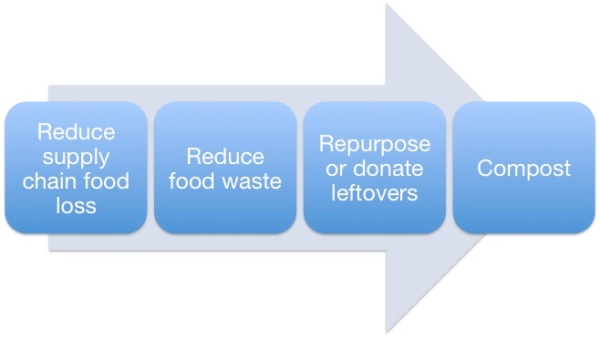
In developing a comprehensive food waste strategy for events, there are four steps that should be followed.
- Reduce supply chain food loss: Work with your supply chain to identify opportunities to reduce food loss
- Reduce food waste: I suggest beginning with a focus on meat and dairy, as these are typically the most resource intensive to produce
- Repurpose or donate leftovers: This can include donating to charities, serving uneaten banquet foods in employee cafeterias, and even donating it as animal feed to farms
- Compost: This is the last step in the food waste strategy, but should always come after the waste minimization strategies mentioned above
Food Donation Legislation
When it comes to food donations, many suppliers may be concerned about liability. Fortunately, many jurisdictions have legislation to protect food donors. It can be helpful to provide suppliers with copy of applicable legislation, such as the Ontario Food Donation Act, 1994.
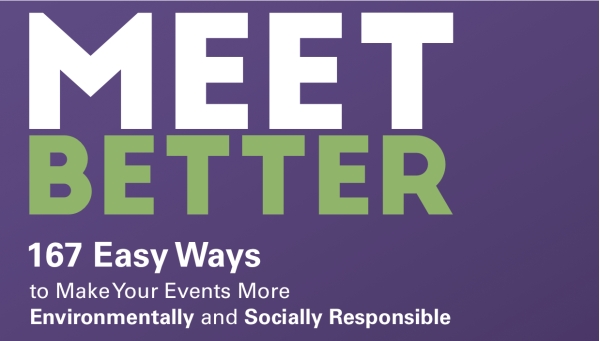 This past December, I had one of those great meeting moments – you know the kind that leaves you inspired and reminds you how face-to-face meetings really are amazing. I met with Nancy Zavada and Shawna McKinley (two amazingly talented women who are experts on sustainable events) and we wrote a book. In a weekend.
This past December, I had one of those great meeting moments – you know the kind that leaves you inspired and reminds you how face-to-face meetings really are amazing. I met with Nancy Zavada and Shawna McKinley (two amazingly talented women who are experts on sustainable events) and we wrote a book. In a weekend.
The three of us had been noticing that there was a need for an easy reference tool for planners who are interested in making their events more sustainable. So we gathered around a table, each equipped with our stack of index cards full of tips and shuffled them into categories. We had hoped to come up with 101 tips, but ended up with 167. The book details all of them, and also includes several infographics on specific topics. Here is one on sustainable seafood that was prepared by our phenomenal graphic designer, Erika Abrams.
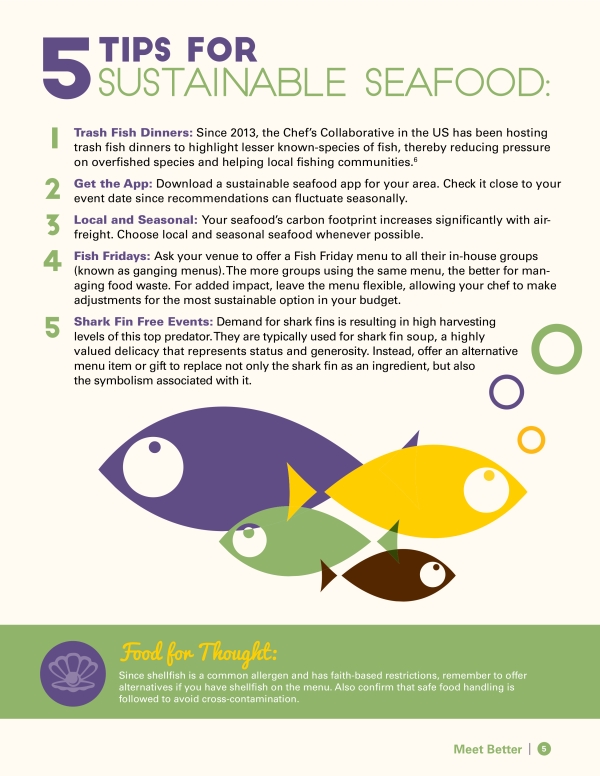 Want to learn more? Copies of the book are available for pre-order here. Use the coupon code “preorder” for a 20% discount. The books will be printed in time for World Environment Day in early June.
Want to learn more? Copies of the book are available for pre-order here. Use the coupon code “preorder” for a 20% discount. The books will be printed in time for World Environment Day in early June.
Check out Shawna and Nancy’s blogs for other unique infographics to help you Meet Better!
#CMP30 Influencers – Who is on your list?

Today, the Convention Industry Council opened up nominations for CMP Influencers. It’s a social media campaign to recognize those CMPs that are making a difference in our industry and is part of the 30th anniversary celebration of the CMP designation. It’s also an opportunity to recognize people that have had a profound influence on our lives as professionals.
Nominations will be accepted now until May 22, 2015 via social media. Post the nomination to the CMP 30th Anniversary Facebook Event Page or the CMP Twitter account the phrase, “I nominate (insert full name) from (insert organization) as a #CMP30 Influencer.” Include the hashtag #CMP30 and a few reasons why the person should be nominated, if space permits. Nominations are open to the public; however, only nominees who have obtained and are current with their CMP designation will be eligible for consideration as one of the top 30 CMP Influencers.
Once the public nomination window closes, the 30 CMP Influencers will be selected during a two-part process. Nominations will be aggregated and tallied via Facebook poll votes during the month of June, after which a committee will meet to select the final winners based on the number of Facebook poll votes, personal influence on peer(s) and community/leadership presence.
The #CMP30 Influencers will be announced in July of 2015 and will be honored with a special reception at the upcoming CMP Conclave, September 26-28, 2015, in Reno, Nevada.
Who are my influencers? In no particular order, here are some of the CMPs that have had a significant impact on me:
The CIC Manual Reviewers:
When I was working on the CIC Manual, I was fortunate to collaborate with 4 exceptional reviewers who each influenced the course of the book in different ways. Terri Breining (Breining Group, LLC) has a wealth of knowledge about our industry, and always applies both a strategic and an ethical lens to her reviews. Eric Rozenberg (Swantegy)helped keep international perspectives at the forefront – something that is so critical in our global industry. Roger Simons (MCI) provided sustainable event expertise – this was fundamental for the approach we took of integrating sustainability throughout the manual. Tyra Hilliard (@drtyra) is my “go to” for industry legal questions, and her way of analyzing and managing risk has changed the way I plan meetings. And… CIC’s own Lawrence Leonard is one of the smartest people I’ve met in this industry and is great at identifying what CMPs need to know in order to make meetings more successful.
The Forecasters:
When I want to know what’s next in our industry, I look to Elizabeth Glau (Building Blocks Social Media) and Tahira Endean (QuickMobile). Elizabeth has a deep understanding of the potential of social media to enhance events. Tahira’s knowledge in the areas of both meeting design and mobile technology has shaped my understanding of the importance and value of both these fields for our industry.
The Experts:
If you have a question about A/V, ask Jon Trask (A/V for Planners). I have really appreciated learning from him about selecting the right technology, not just what’s new and shiny. Nancy Zavada (MeetGreen) is incredibly knowledgeable about sustainability and her dedication to advocating for sustainable events has had a tremendous impact on the way meetings are designed and managed. Janet Sperstadt (Madison College) shares her vast expertise as an educator and is making a difference for the next generation of meeting professionals.
The Strategists:
There are people in our industry whose work is redefining the way that we conduct business. Eduardo Chaillo (Global Meetings & Tourism Specialists, LLC) has a deep understanding of the forces affecting our industry and leverages this knowledge to influence a positive evolution; and his dedication to mentoring is inspiring. Christine “Shimo” Shimasaki (DMAI) has helped us to have a richer understanding of the value of meetings through her work on empowerMINT. Karen Gonzales (also from DMAI) has been a longtime champion of cross-cultural communication and the value of diversity.
Which CMPs are on your list?
Celebrating 2013 #ArchiveFavs
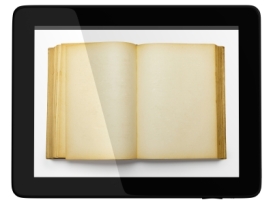
Image courtesy of adamr at FreeDigitalPhotos.net
Eek! 2013 has been a terrible year for me in terms of blogging. I’ve had good intentions, including a bunch of half-written posts sitting in my drafts, but somehow, other projects have gotten in the way.
Truth be told, I enjoy blogging, but sometimes find it a bit deflating that blog posts seem to have such a short shelf life, not only on this blog – but on those of many brilliant bloggers that I follow regularly. So, today I’m celebrating some of my favourite posts from some of the blogs that I love to read regularly.
Listed below (in no particular order) are some of my favourite blog posts from this year. Most are from the #Eventprofs community, but I’ve also been following some in the sustainability and content marketing fields.
- Shawna McKinley‘s posts Do Events Have the Power to Heal and Meeting Mythbusters: Bioplastic Fantastic? on her blog Eventcellany. Shawna is a gifted writer who is both thoughtful, and thought-provoking. What I most enjoy about Shawna’s posts is the rich analysis she brings to her writing, which she infuses with personal stories. (Reaching back a bit more – I love reading her 2011 The Jackass Whisperer from her previous blog, Sustainable Destinations.)
- Tahira Endean‘s post How Would You Sign Your Day is a touching tribute to women influencers. Towards the end of the post, building on the words of Marilyn Carlson Nelson, she asks “If you imagined your life as a great masterpiece, and today was a painting, would you put your signature on it?” – something I’m going to try to myself more in 2014. I love following Tahira’s blog Events, Life and Impact Points – she keeps me up to date on the latest industry trends, and is always sharing the spotlight with others.
- Nancy Zavada‘s post Stop Traffick! brings light to the important issue of helping to end child trafficking. She provides links to resources for event professionals to help us to get involved in this human rights issue. Nancy’s blog, Pretentious Musings of a Meet Green Martyr is great to follow for her on the ground reports of sustainable events, and she is one of the people that inspires me the most in this field.
- Dennis Shiao‘s How to Do Product Marketing Without Marketing Your Product was a great start to the year – a good blend of tried and true marketing concepts with newer elements of content marketing brought to the forefront. His blog, It’s All Virtual it’s a great source of information on social media, content marketing and personal branding.
- Jenise Fryatt‘s post Are You Practicing Ethical Content Marketing? transcribes a timely #ContentChat discussion on issues ranging from plagiarism to reputation management. She blogs regularly with Mitchell Beer on the SmarterShift’s The Content Roundtable blog. I also recommend Mitchell’s post A Low Carbon Future Depends on Economic Conversion.
- Julie Urlaub‘s post Sustainable Supply Chain 101 is a great piece on the business case for promoting sustainability outside your organization’s walls. I highly recommend her Taiga Company blog for sustainable business content.
- Jeff Hurt‘s post It Is Time To Reinvent the Meetings Industry and the Meeting Professional is a great call to action. My favourite quote “We have more silos for our major conferences than the traditional farm. Unfortunately, the conference silos are not used to store nourishment that leads to outstanding education and networking.” Velvet Chainsaw’s Midcourse Corrections, where Jeff blogs along with Dave Lutz, Sarah Michel and Donna Kastner is a fantastic resource for event professionals.
- Jonathan Bloom‘s Wasted Food blog is one of my favourites. He includes great infographics, resources, and funny anecdotes and photos that keep things lighthearted. I particularly enjoyed his solution to a rotten spot an apple and his collection of alphabet shaped veggies.
I encourage you to spend a bit of time rummaging through your favourite bloggers’ archives looking for treasure to share.
The Meeting Professional’s Guide to Behavioral Economics
I’m honoured to have an article in this month’s MPI One+. A quick recap of the article can be found below.
World Water Day – Resources for #Eventprofs

In honour of World Water day, here are some of my favourite resources for event professionals:
International World Water Day Resources:
- UN World Water Day Information – useful information about the water crisis
- Taiga Company’s Pinterest page – beautiful images and great curated content
Water Footprint Information:
- Water Footprint Network – this is my “go to” page for water footprint information. Their product gallery is incredibly useful and has strong scientific background.
- National Geographic Water Footprint Calculator – great way to measure your household footprint.
- ONE DROP’s Calculator – gives you the water footprint of what’s on your plate.
Charitable Organizations:
- Charity Water – Pledge your birthday campaign is pretty cool
- ONE DROP – Excellent resources
Industry Specific:
- Shawna McKinley’s blog post on how much water is saved using water stations instead of bottled water.
- Green Meeting Industry Council’s information page on International Water Day 2012 (be sure to click on the commitment to change form for more great information)
- A bit self-promotional, but I really like my last post on water conservation for meeting professionals (infographic)
What are your favourite resources?
Image courtesy bigstockimages.com / hospitalera
Does your event need some @kred?
In December, I had the honour of speaking about Gamification at the Next Generation Meetings Conference in Stockholm. While there, I was introduced to the Kred leaderboard for events and saw first hand how it encouraged interaction and social media engagement. The Kred leaderboard was projected on the wall of the event and it provided real time information about who has the most influence, as well as who is the most generous on social media.
What I like about the Kred Leaderboard for Meetings
- Encourages social media interaction: using gamification best practices, including real time feedback and rankings, Kred motivates participants to interact.
- Amplifies the reach of your event: by encouraging participants to be more active on social media, they are able to engage their networks both inside and outside of your event community.
- Encourages pro-social behaviour: since Kred measures not only influence but also outreach, it rewards participants for recognizing others and engaging in dialogue – all things that we want in building a stronger event community.
I’m grateful to Kred’s CEO, Andrew Grill, for answering a few questions about Kred and how to set one up for your event.
My Interview with Andrew Grill, CEO of Kred
Q1. What is the difference between influence & outreach?
Kred Influence is the measure of what others do because of you on social media. Your Influence score increases when someone takes an action because of your content on Twitter related to the event hashtag. On a Kred event leaderboard, those with the highest influence score are the ones being mentioned most at the conference, and generally it is the current speaker on stage who scores the highest for influence. Kred Outreach is the measure of your generosity. Outreach increases when you retweet, @reply a person. On the Kred event leaderboard, those being generous and mentioning other delegates and speakers by @name will rank higher on the board.
Q2. What is the leaderboard and how is it used for events?
The Kred events leaderboard provides a real-time view of who has influence, and who is being generous at the conference. The leaderboard is reset at midnight each day, and to appear on the board, you must mention the event hashtag and at least one other @name. Points are then awarded to the mentioner and the person who mentions based on the Kred scoring rules. The leaderboard refreshes every 30 seconds so delegates can see not only who is at the conference and talking about it, but who they should connect with because they are driving real interest and action at the event. A live example of a Kred leaderboard can be found at http://events.kred.com
Q3. How do meeting planners create a leaderboard?
At the moment the quickest way is to contact Kred and we can set up the leaderboard – it is a paid service. In the future we will provide as self-service tool allowing event planners to create, modify and curate any leaderboard they like themselves. The elements that can be changed are the title, logo, and color scheme. In addition, specific @names can be withheld from appearing on the board in real time.
Q4. What are the benefits of the leaderboard for events?
The feedback from these event leaderboards has been amazing. People love seeing their names up “in lights” on the big screen, and at every one of the 100+ events we have run with the leaderboard, there has been a very healthy competition between delegates to get to the top of the leaderboard – gamifying the experience. In some instance, iPads and hotel stays have been awarded to the people at the top of the list at the end of each day by the event organisers and their sponsors. The second benefit to an event planner is that it extends the reach of the event beyond a physical location. Because delegates must use the event hashtag in a public tweet to appear on the leaderboard, this means that literally thousands of other people not at the event read tweets tagged with the #conference name and start to “tune in” to what is being said, and contribute virtually. This means that the leaderboard drives many more organic mentions of the conference by delegates on twitter – at no incremental cost.The leaderboard has also become an amazing delegate discovery tool. Many people have said that they only knew a particular person was at the event because they saw their name on the leaderboard, and decided to seek them out and renew or create new relationships at the conference.
How much water can a conference bag hold?
We’re moving, which means we’ve been decluttering the house, or at least trying to! As part of the “big clean”, I came across a suitcase full of old conference bags, with all kinds of exhibitor catalogues, flyers, brochures, etc. Perhaps with a hint of procrastination, I decided to calculate the water footprint of one of these bags. Here’s what I came up with:
- 1 cotton tote bag = 2500 litres
- 182 pages of paper = 1820 litres
- Total = 4320 litres (over 1000 gallons!)
- Estimated event participants = 2500
- Total water consumption from tote bags and materials = 10,800,000 litres
According to this National Geographic article, the global average water footprint of 900 gallons per person per day for diet, household use, transportation, energy, and the consumption of material goods, meaning that the bags and papers from this one conference were equivalent to the daily needs of 12,000 people.
World Water Day is coming up on March 22nd and I hope that these tips for reducing the water footprint of your event will come in handy.
My 1st #ScholarSunday goes to… @GlobalEcoGuy
Let me start by saying, I’m not an academic. I do however, have a great appreciation for academics, and particularly those that are using social media to help inform and engage the non-academic community. A few months ago, I came across the #ScholarSunday hashtag – started by Dr. Raul Pacheco as a #FollowFriday for academics. I think this is a brilliant way of helping to identify those academics that are transforming the role of academics in society. From a meetings industry perspective, finding engaging academics can add an valuable perspective to your program, regardless of whether or not you’re hosting an academic event.
What I look for in a #ScholarSunday:
- Do they challenge my assumptions?
- Do they tell great stories, and are they able to back them up with solid research?
- Can and do they respond well to criticism about their findings or posts?
- Do they actively engage with their friends and followers on social media, or do they only broadcast about themselves?
- Is their work accessible to the non-academic?
- Do they come across as human?
Why My 1st #ScholarSunday goes to @GlobalEcoGuy
My first #ScholarSunday goes to @GlobalEcoGuy (Dr. Jonathan Foley, the director of the Institute on the Environment (IonE) at the University of Minnesota) for the reasons listed above. His TED talk (see below) and thought provoking articles in Nature and Scientific American focus on a plan to feed the world while sustaining the planet. (FYI – their new publication ensia is my favorite online magazine – great science, stories and visuals.)
In preparation for this post, I had the pleasure of interviewing him about science & social media. A short excerpt from the interview is below:
@meetingchange A2: Many! But mostly to get outside the academic ivory tower bubble, at least for a bit. We usually only talk to ourselves…
— Jonathan Foley (@GlobalEcoGuy) March 7, 2013
[View the full transcript of “My Interview with @GlobalEcoGuy” on Storify]
I also put him on the spot for who he likes to follow on social media. His comments on possible generational differences to approaches to social media can be found in the transcript above, and he also provided a few names:
@meetingchange A3 (cont): Anyway, I really like to follow @revkin @bradplumer @keithkloor @ddimick @jacquelyngill @lizneeley @calestous
— Jonathan Foley (@GlobalEcoGuy) March 7, 2013
Advice for Eventprofs about Academics as Speakers
I have planned many academic conferences over the years, and I can say that some academics are exceptional presenters and others well, are not. I think that #ScholarSunday has the potential to be a great resource for event professionals because it helps us to identify academics that know how to engage and are respected by their peers. In addition, I strongly recommend finding videos of their presentations, as this helps to get a sense of their presentation style as well. A few tips to share with them before their sessions include:
- Review expectations about the presentation style that you and your participants need, including interactive and visual elements.
- Ask them to engage with your event participants using the event hashtag before, during and after the event.
- If possible, schedule a twitter chat with several speakers and your community members and send the transcript out to promote your event.
- Provide them with background information about your audience and the audience’s knowledge of the subject matter so that the content can be appropriately tailored.
- Consider an interview format rather than a standard lecture presentation, this can help make the session more engaging for the audience.
